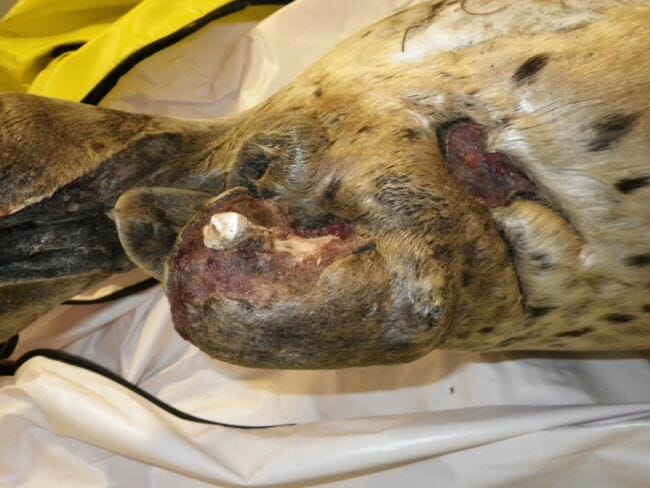
There’s only one historical record of a great white shark in the Bering Sea: fishermen caught one nearly forty years ago. But scientists have reason to believe that in recent years there might be more of the predators around.
In the past three years or so something strange has been opening its jaws to marine mammals in the Bering Sea. Seals have turned up with chewed off flippers and large bite marks. Some were beheaded.
Brandon Ahmasuk is the subsistence coordinator at Kawerak, the nonprofit arm of the Bering Straits regional Native corporation. He says killer whales have been known to maim their prey, but the bite marks that have been showing up recently look clean. Killer whales tend to tear apart their food, which got Ahmasuk thinking about great white sharks.
“When we first started getting pictures of these, we started asking local fish and game and the fisheries department, ‘could this be a shark attack?'” Ahmasuk said. “Right off the bat, we kind of got laughed at.”
Eventually, with help from Alaska Sea Grant, the pictures were sent off to a shark expert in Hawaii.
“Within five minutes we got a response back: this is a classic shark bite,” Ahmasuk said.
About seven years ago, a couple of hunters spotted a large predator in the water on the south side of St. Lawrence Island in December. It had been a warm year, and sea ice hadn’t developed on that side of the island yet.
Ahmasuk says the hunters were looking for seal, when they saw a Steller sea lion leap out of the water.
It was “trying to get his butt to the island as fast as he can,” Ahmasuk said. “Before it got to the island, it came out of the water, and all a sudden it got hit from underneath, and [the hunters saw] a shark hitting [the steller sea lion] and going down … Nothing else came up after that, but the water was just red.”
The hunters saw what appeared to be a 16-foot long shark, which is consistent with the size of a great white.
Ahmasuk estimates there’s been about 20 reports of seal maimings, and scientists are still trying to gather more information from coastal communities before they can definitively say what’s going on.
But as the Bering Sea continues to warm, it’s not impossible to fathom: more great white sharks could be hanging around.
